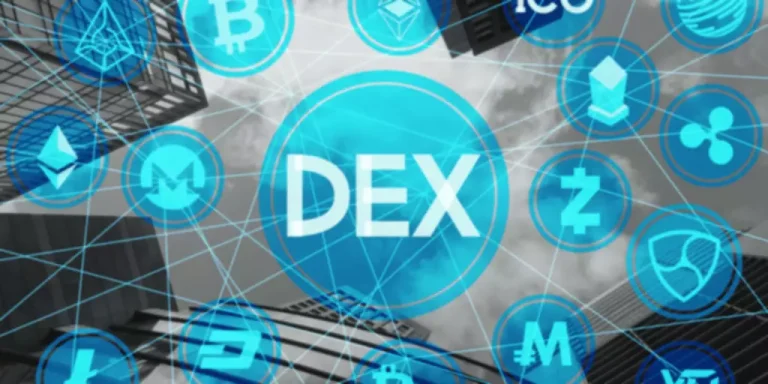As global crypto adoption increases, ieo coin IEOs could become more integrated with traditional financial systems, potentially leading to a more standardized approach across different regions and regulatory frameworks. This integration is seen as a step towards legitimizing IEOs as a mainstream investment option. The platforms’ vetting procedures, at best, allow new projects that they believe are a good fit for the platform. The information provided on this website does not constitute investment advice, financial advice, trading advice, or any other advice, and you should not treat any of the website’s content as such. A strong and supportive community can greatly contribute to the success of your IEO.
The risks and opportunities of an IEO
- These tokens represent ownership in an underlying asset, such as shares in a company or real estate.
- The IEO is an attempt to revive the success of the highly effective funding mechanism of ICO’s but with more constraint and higher standards.
- Unlike traditional Initial Coin Offerings (ICOs), IEOs involve a cryptocurrency exchange as an intermediary, which helps to vet the projects and reduce the risk of scams.
- An IEO is different from an Initial Coin Offering (ICO) in that it’s made possible with the help of a cryptocurrency exchange like Binance.
- A well-written and informative white paper is essential for attracting investors and exchange platforms.
- Yet IEOs aren’t necessarily more secure than ICOs – at worst, they can be considered centralized gatekeepers about the types of projects that proliferate.
- Peter’s main crypto interests are censorship-resistance, privacy and zero-knowledge tech, although he covers a broad range of crypto-related topics.
They aim to allow project teams to focus on https://www.xcritical.com/ product development and building, while they provide the initial marketing exposure and user base. The white paper also includes information about the team behind the project, tokenomics, and the reasons why investors should be interested in the project. After the project passes the verification process and the white paper is approved, the exchange platform sets a date for the token sale. An IDO is a fundraising method in which a coin or token is issued via decentralized exchange (DEX). A core difference between IEOs and IDOs is that an exchange’s permission is not required to conduct an IDO.
Initial Exchange Offering Disadvantages
This shift from ICOs to IEOs has occurred due to the loss of trust and confidence in ICOs caused by numerous cases of fraud and scams. Just because the IEO exists, it doesn’t mean that everyone should invest in these offerings. Doing your own due diligence is advised at all times, regardless of how companies and projects aim to raise funds. There are benefits to contributing funds to an IEO, but the risks cannot be overlooked either. An IEO is different from an Initial Coin Offering (ICO) in that it’s made possible with the help of a cryptocurrency exchange like Binance.
Get the latest cryptocurrency news directly in your inbox.
Focus on building a community of genuine supporters who are passionate about your project. Engage with them through social media, forums, and community events to foster loyalty and advocacy. Utilize various marketing channels, such as social media, press releases, and blogging, to create awareness and generate interest in your project. Cryptopedia does not guarantee the reliability of the Site content and shall not be held liable for any errors, omissions, or inaccuracies. The opinions and views expressed in any Cryptopedia article are solely those of the author(s) and do not reflect the opinions of Gemini or its management. The information provided on the Site is for informational purposes only, and it does not constitute an endorsement of any of the products and services discussed or investment, financial, or trading advice.

Tips for a Successful IEO Fundraising Event
Having a robust business model, experienced team members, a viable use case for the technology, and providing a whitepaper are absolutely crucial. Organizing an IEO is akin to stating that they are committed to the long-term success of the project. Because an IEO is facilitated by an exchange, the startups opting for this route have to be serious about their plan of action. In most cases, the IEO proposal is rigorously reviewed by the participating exchange. In some ways, the exchanges put their reputation on the line for every IEO they decide to offer. Attempting to get funding from venture capitalists (VCs) can be time-consuming, with little or no results to show for it.
How to Participate in an IEO: A Guide for Investors
STOs offer more regulatory compliance and investor protection compared to ICOs and IEOs. IEOs provide a more secure and regulated environment for both investors and projects. They require a thorough verification process and the submission of a white paper to ensure the legitimacy and viability of the project.
The IEO space is getting crowded

The fundraising journey in the crypto space has evolved significantly over the years, moving from largely unregulated ICOs to more structured and secure IEOs. ICOs were famous for their open participation model but suffered from numerous scams and regulatory issues, leading to a decline in their credibility. This necessitated a shift towards IEOs, which are hosted on established exchange platforms that vet projects and offer investors a layer of security and trust. Additionally, in most cases an organization looking to fundraise via an IEO has to offer financial compensation to the participating exchange. In some cases, the exchange may even restrict IEO participation to investors who are willing to hold a certain amount of the IEO’s native exchange token. As a result, crypto enthusiasts looking for a decentralized form of fundraising may be put off by this model.
History of IEOs: Evolution of Crypto Fundraising
IEOs provide a more secure and trustworthy platform for startups to raise capital and for investors to participate in token sales. A growing number of projects are simultaneously launching IDOs on multiple blockchain launchpads and releasing tokens on a combination of different smart contract platforms. The first iteration of blockchain-enabled fundraising was the Initial Coin Offering (ICO), a form of crowdfunding in which an organization sells cryptocurrency or tokens as a means of raising funds.
This added layer of security attracts more investors, boosting the liquidity and visibility of new crypto projects. An Initial Exchange Offering (IEO) is a fundraising mechanism where new cryptocurrency projects sell their tokens through a partnering exchange, leveraging its user base and trust to attract investments. Here’s a look at IEOs’ operational mechanisms, benefits and risks, future trends, and insights on the evolution of IEOs in the cryptocurrency landscape. To reduce the risk of scams, exchange platforms that facilitate token offerings will perform a multitude of checks before commencing a sale. After all, if a new digital currency isn’t everything it was cracked up to be, the crypto exchange’s reputation could be at risk for launching the IEOs.

Last but not least, a token that has been sold through an IEO is usually listed on the exchange shortly after the conclusion of the token sale, providing liquidity and easy access. As always, you should do your own research before deciding to purchase any tokens. With proper planning, a solid project, and effective marketing, an IEO can be a valuable fundraising tool for blockchain projects.
To that end, Initial Exchange Offerings (IEOs) and Initial DEX Offerings (IDOs) were created to improve on past fundraising processes. As the name suggests, an Initial Exchange Offering (IEO) involves the use of a cryptocurrency exchange to raise funds for a new project. It is common to trade assets on these platforms, but that typically only happens after the developers raised money to kickstart their projects. The drawbacks of IEOs – gatekeeping, opaque vetting processes and listing fees – have attracted some projects to initial DEX offerings.
One such model is the security token offering (STO), in which token issuers are focusing on regulatory compliance and granting certain rights and protections to participants in token sales. A well-written and informative white paper is essential for attracting investors and exchange platforms. Clearly articulate your project’s vision, technical aspects, tokenomics, and the benefits it offers to investors.
Centralized exchange serves as a platform for a project’s initial sale of tokens. Even though every IEO is vetted by the participating exchange, no investment is without risk. It is possible that the project raising funds will not be able to realize its vision. This can and often will impact the token price, regardless of its value during the IEO. Investors send money through exchange wallets, rather than sending it to the project directly. Dishonest projects or teams with little business sense will not be able to conduct a successful IEO either, due to the very strict requirements.
This setup not only helps ensure a smoother and more regulated transaction but also provides the projects with an immediate market presence. What all these initial offerings have in common is that they create a set number of crypto assets in the form of a token or coin to sell to the public, usually at a fixed price. The IEO is unique because the sale of these initial tokens is managed by an existing crypto asset exchange instead of directly by the project team. IEOs play a crucial role in the crypto ecosystem by providing investors with a more secure and regulated environment. Unlike traditional Initial Coin Offerings (ICOs), IEOs involve a cryptocurrency exchange as an intermediary, which helps to vet the projects and reduce the risk of scams.
For blockchain projects that generate a lot of buzz, IEO platforms can help them raise capital quickly. Just look at BitTorrent, which managed to raise $7 million just 14 minutes after its listing on Binance Launchpad went live (it was later bought by Tron). That said, there are some marked differences from initial public offerings and IEOs you need to be aware of. An Initial Exchange Offering, or IEO, is a fundraising event where the sale of tokens is conducted through an established cryptocurrency exchange platform. However, since ICOs are not yet subject to any regulations, the ICO process can be quite risky and opaque. For example, many investors that bought in the 2017 ICO hype were eventually burned by low-quality projects or assets that were deemed unlicensed securities.
The first major exchange to offer the IEO and popularize the practice was Binance through their IEO platform called Binance Launchpad. However, even Binance’s founder, Changpeng Zhao (aka CZ), admits that they did not invent the concept or the term and were inspired by “centralized ICO” websites that were popular in 2017. Initial Exchange Offerings and Initial DEX Offerings are blockchain-enabled fundraising models with unique improvements as compared to ICOs and IPOs. Additionally, they need to determine if their Initial Exchange Offering will have a hard or soft cap. A hard cap ensures that no more than a certain amount of money can be invested.



